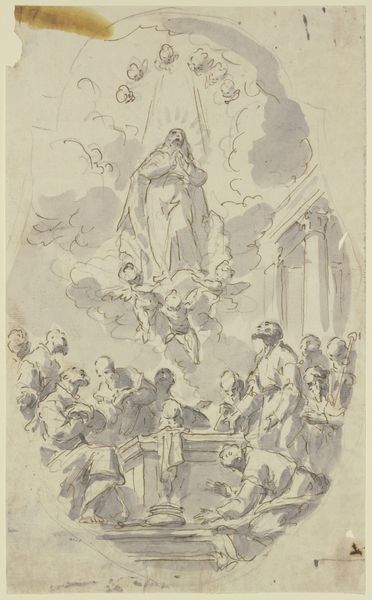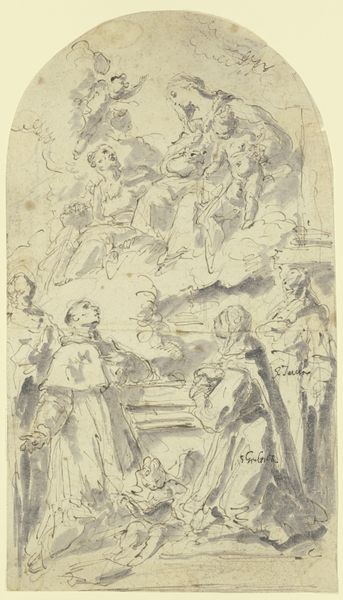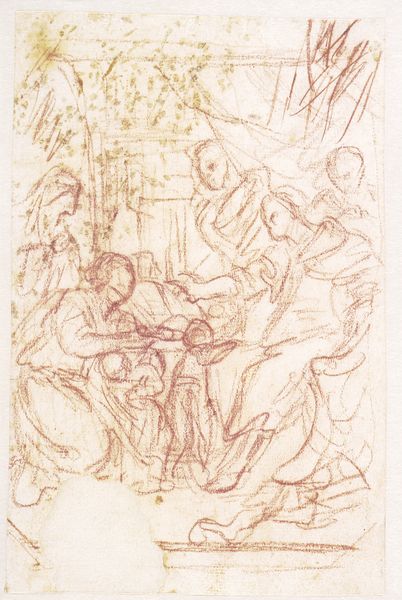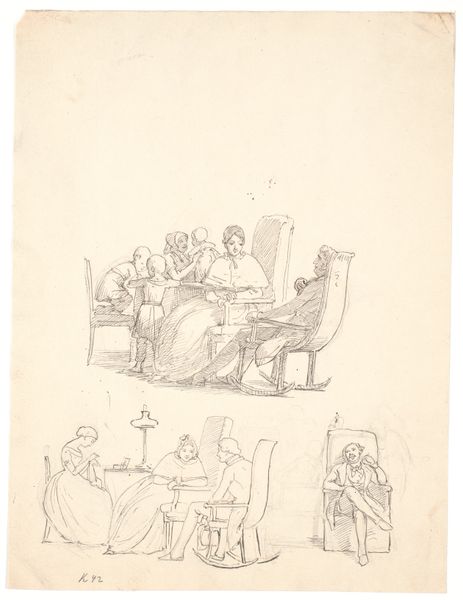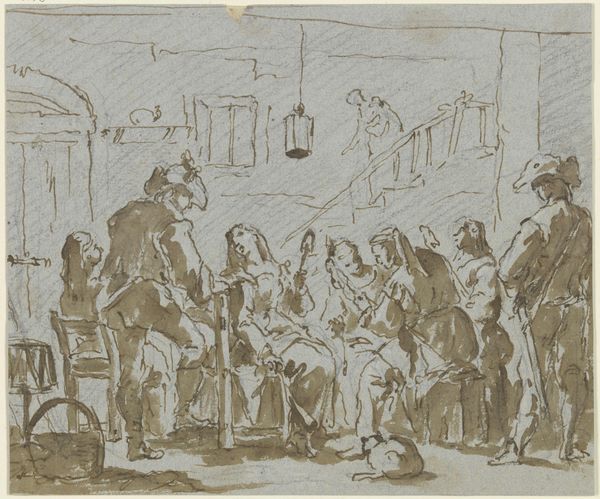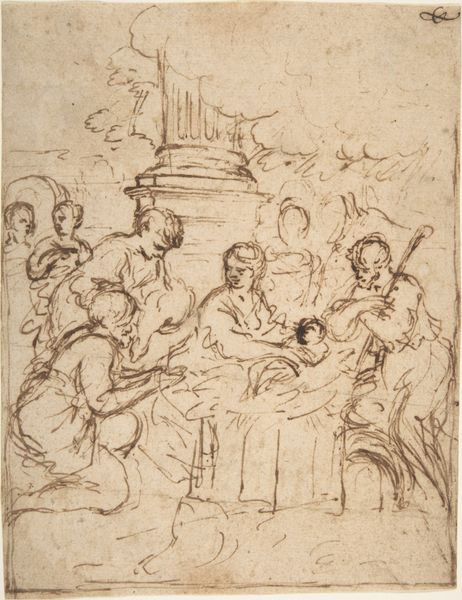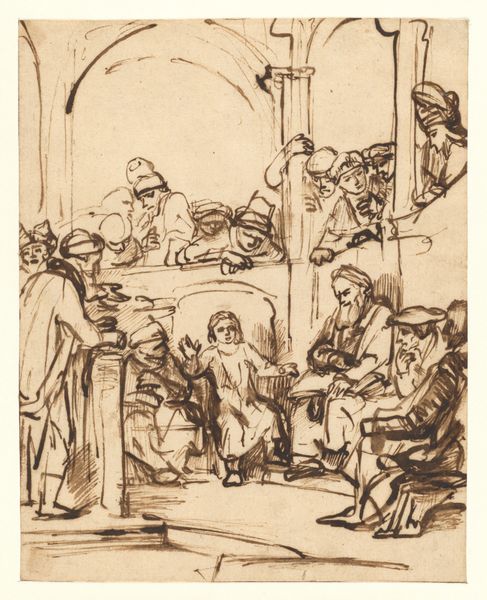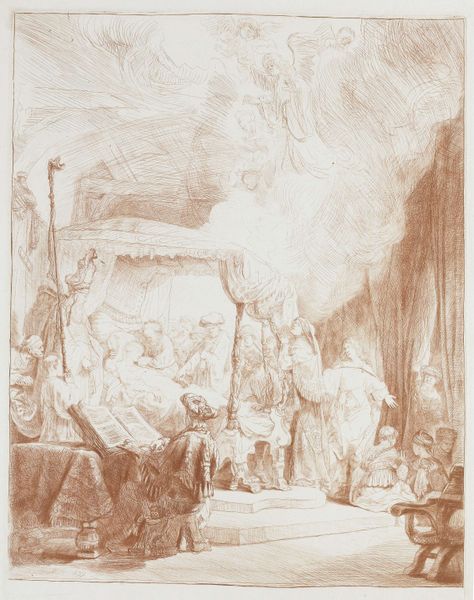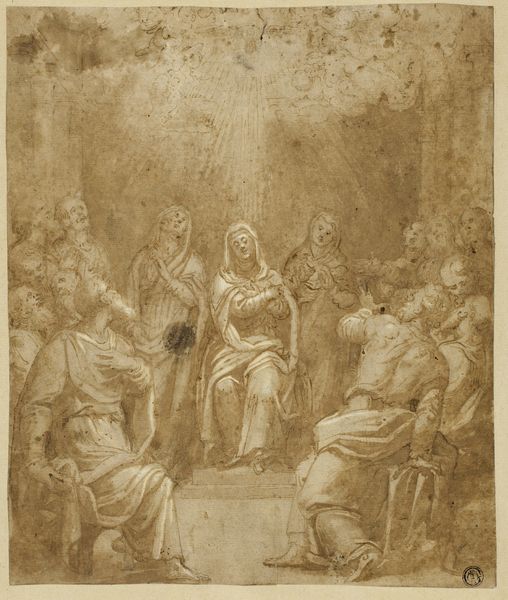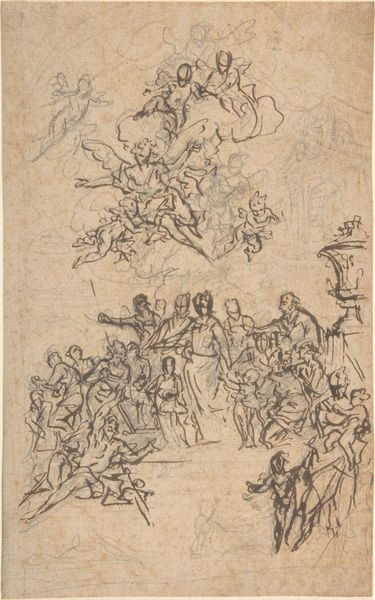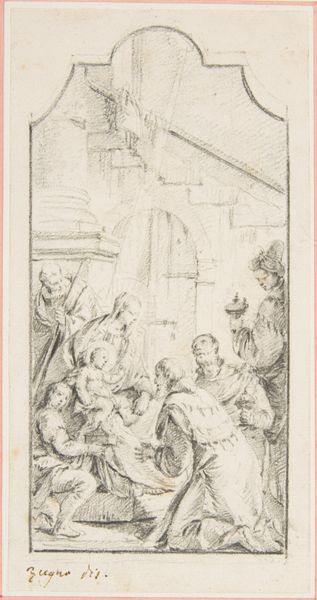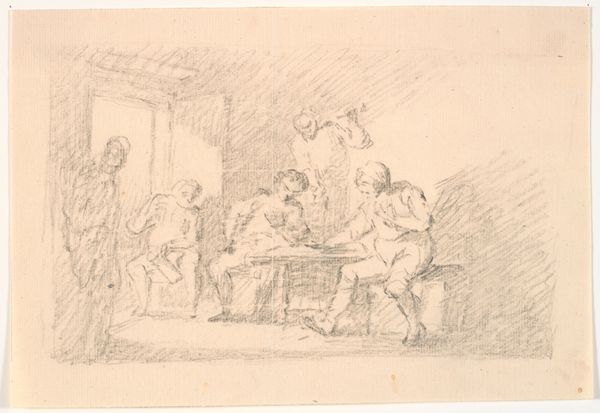
Een gezelschap van acht lofzingende personen rondom een tafel 1798 - 1837
0:00
0:00
drawing, ink, pen
#
portrait
#
drawing
#
ink drawing
#
pen sketch
#
etching
#
figuration
#
ink
#
pen
#
genre-painting
#
history-painting
Dimensions: height 86 mm, width 74 mm
Copyright: Rijks Museum: Open Domain
Curator: Ah, a charming pen and ink drawing titled "Een gezelschap van acht lofzingende personen rondom een tafel," or "A company of eight praising persons around a table." It's attributed to Ernst Willem Jan Bagelaar, and likely dates between 1798 and 1837. Editor: It's rather striking! The limited palette gives it a serene, almost ethereal quality. I'm drawn to the composition; the figures huddled around the table contrasted with the celestial elements above. Curator: The ethereal quality, as you describe it, is indeed compelling. The angelic figures and emanating light carry powerful religious symbolism – the scene clearly evokes a moment of divine blessing or inspiration. The table, typically an object of earthly connection, here becomes a focal point for a link to the divine. Editor: It makes me think about the accessibility of materials in that period. Ink and pen were relatively common. What do the deliberate choices surrounding those accessible materials say about its purpose or potential audience? Was this intended for mass consumption? Or for the more well-off? Curator: That’s an insightful consideration. While the medium might seem commonplace, the subject matter – a scene of religious communion – elevates it beyond mere utilitarian production. Perhaps it was intended for a relatively affluent patron, someone with refined sensibilities, seeking a tangible, emotionally charged reminder of their faith, which would align with an emerging middling class. The pen sketch creates a feeling of personal meditation. Editor: It seems the artist gave thought to how the application of labor and skill in the ink drawing transforms readily available matter into something imbued with symbolism, faith, and a personal connection for whoever gets to view it. Did that draw more members from rising social classes into enjoying such artwork? Curator: Precisely. Artworks like this drawing played a crucial role in the transmission of religious and cultural values to rising social groups during the period. Its narrative simplicity and its effective deployment of easily-grasped visual symbols worked together to deliver, so to speak, spiritual edification. Editor: That convergence, where materials, social context, and belief systems interlock, adds depth. Viewing it with the eyes of that moment makes it that more powerful. Curator: Indeed, understanding the intricate dialogue of visible symbolism and social context certainly provides valuable perspectives. Editor: I agree, there's a quiet intensity in its lines that lingers. Thanks for guiding us through the social and spiritual threads in this particular sketch!
Comments
No comments
Be the first to comment and join the conversation on the ultimate creative platform.
